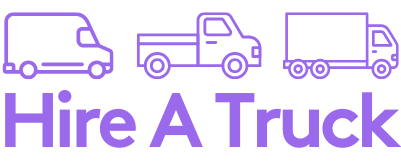When it comes to moving house, transporting bulky furniture, or delivering goods for your business, choosing the right size moving van can save you both time and money. Too small, and you’ll be making multiple trips. Too large, and you might be paying for space and fuel you don’t need.
This comprehensive guide breaks down the most common types of moving vans in Australia and how to choose the right one for your next haul.
1. Small Moving Vans (1–1.5 Tonne)
- Best for:
- Small apartment moves (studio or one bedroom)
- Single-room or student relocations
- Transporting a few large pieces of furniture (e.g., a double bed and a small sofa)
- Capacity: A small van can typically fit the contents of a studio apartment, including a double bed, a small fridge, a washing machine, and around 10–15 boxes.
- Pros:
- Easy to drive and park (similar to a large car)
- Lower rental and fuel costs
- Perfect for navigating narrow city streets
- Cons:
- Limited space – not suitable for full home moves.
- May require multiple trips for a two-bedroom apartment.
2. Medium Moving Vans (2–3 Tonne)
- Best for:
- 1–2 bedroom homes or small townhouses
- Small office relocations
- Moving large whitegoods (fridges, washing machines) and bulky furniture
- Capacity: This size is a popular choice for household moves. It can comfortably carry the contents of a two-bedroom apartment, including a queen-size bed, sofa, dining table, and 20–30 boxes.
- Pros:
- Excellent balance between space and manoeuvrability
- Can fit most household essentials in one or two trips
- Often equipped with features like hydraulic tail lifts
- Cons:
- Slightly higher fuel consumption than a small van.
- More challenging to park in tight spots.
3. Large Moving Vans (4.5–6 Tonne)
- Best for:
- 3–4 bedroom houses or large family moves
- Relocating large, heavy furniture or commercial equipment
- Transporting a car or other vehicles on a trailer
- Capacity: This is the workhorse of moving trucks. It can handle a full household move, including large lounge sets, dining tables, multiple beds, and all major appliances in a single trip for most homes.
- Pros:
- One trip for most moves, saving time and stress.
- Can handle heavy, bulky items with ease.
- Often comes with a hydraulic tail lift as standard.
- Cons:
- More challenging to drive and park, especially in residential areas.
- Higher rental and fuel costs.
4. Extra-Large Trucks (6+ Tonne)
- Best for:
- Interstate moves or large-scale relocations
- Commercial and industrial transport
- Events or exhibition logistics
- Capacity: These trucks are for very large-scale hauls, with a capacity equivalent to a small shipping container. They are designed for maximum volume and can transport heavy and oversized loads that would otherwise be impossible.
- Pros:
- Maximum space for large-scale hauls
- The most efficient option for long-distance moves
- Cons:
- Requires a heavy vehicle licence and is not suitable for city driving.
- Significantly higher rental and fuel costs.
Licence Requirements: What You Need to Know
In Australia, the type of licence you need is determined by the vehicle’s Gross Vehicle Mass (GVM), which is the maximum weight of the vehicle and its payload.
- Standard Car Licence (Class C): This licence is sufficient for driving any vehicle up to 4.5 tonnes GVM. This includes most small and medium moving vans (1-3 tonne) and is the most common requirement for DIY moving.
- Heavy Vehicle Licences (LR, MR, etc.): For any truck with a GVM over 4.5 tonnes, you will need a specific heavy vehicle licence. This applies to most large and extra-large moving trucks. You must have held a standard car licence for at least one year before you can apply for a Light Rigid (LR) licence. Always confirm the licence requirements with the rental company before booking.
Essential Features to Look for in a Moving Van
Beyond just size, a few key features can make a big difference to your moving experience.
- Hydraulic Tail Lift: A hydraulic lifter on the back of the truck can be a lifesaver for heavy items like fridges, washing machines, and large cabinets. It allows you to lift and lower them from the ground to the truck bed safely and with minimal effort.
- Tie-Down Points: Look for multiple tie-down points inside the van. Using ropes or ratchet straps to secure your load is crucial to prevent items from shifting and getting damaged in transit.
- Reversing Camera: A reversing camera or sensors are a huge bonus for large trucks. They make it much easier and safer to park and manoeuvre in unfamiliar residential areas or tight driveways.
Packing Tips to Maximise Space
Choosing the right size van is only half the battle. How you pack it is just as important.
- Disassemble Everything: Take apart all furniture that you can, such as beds, tables, and desks. This will save a significant amount of space and make items easier to handle.
- Pack Vertically: Use uniform-sized boxes and stack them vertically against the walls of the van. This maximises vertical space and prevents boxes from getting crushed.
- Load Heavier Items First: Place your heaviest, largest, and sturdiest items—like fridges and sofas—at the front of the van (closest to the cabin). This creates a solid base and distributes the weight evenly.
- Fill the Gaps: Use soft items like blankets, pillows, and towels to fill any gaps between boxes and furniture. This provides extra cushioning and prevents items from shifting.
Tips for Choosing the Right Moving Van
- Assess Your Load: Create an inventory of your items to get a better idea of the volume you need. Don’t forget to factor in items that aren’t in boxes, like furniture and appliances.
- Consider a Tail Lift: If you have heavy whitegoods or furniture, paying a little extra for a van with a hydraulic tail lift is a worthwhile investment in your safety and a smoother move.
- Check the Fine Print: Look beyond the daily hire cost. Factor in additional expenses like fuel, insurance excess, and the cost of hiring optional extras such as trolleys and furniture blankets.
- Know Your Licence: Always confirm the licence requirements with the rental company, as GVM rules can vary slightly between states.
Conclusion
Choosing the right moving van is about balancing size, cost, and convenience. For small, quick moves, a compact van is often enough. For larger relocations, it’s worth booking a medium or large truck to save time, effort, and the stress of multiple trips. Taking the time to assess your needs and find the right vehicle with the right features will ensure your next move is as smooth as possible.
🚚 Ready to move? Book your Moving Van Today
Once you’ve determined the right size and features for your move, it’s time to find a reliable hire company. Alpha Car Hire offers a range of vehicles, from small moving vans to larger trucks, to suit all your relocation needs. Their competitive rates and well-maintained fleet, including options with a GVM under 4.5 tonnes that you can drive on a standard car licence, make them a popular choice for movers in Australia.
Ready to get the right vehicle for your next haul? Book your moving van with us today and make your move as simple as possible.



